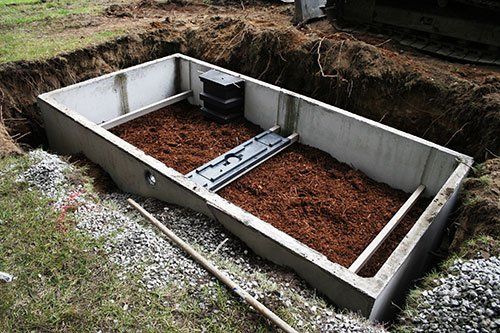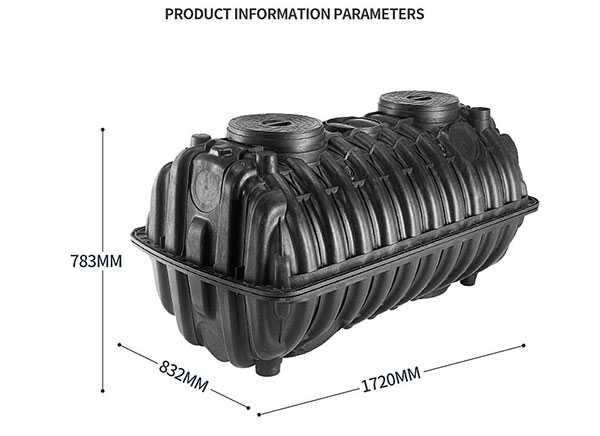Septic System Solutions Unraveled: From Installment to Upkeep-- Your Total Overview
Are you having a hard time to recognize the ins and outs of septic storage tank solutions? Look no further-- this full guide will unwind every little thing for you. From installment to upkeep, we'll walk you via the process action by action. Discover regarding the essential equipment needed for correct upkeep and the indications of prospective problems to enjoy out for. And also, we'll even share some convenient do it yourself pointers to maintain your septic container running efficiently. Prepare to become a sewage-disposal tank specialist!
Septic Container Installment Refine
When installing a septic storage tank, you will certainly need to carefully excavate an opening in the ground. Use a backhoe or an excavator to dig a hole that is wide and deep sufficient to fit the size of your septic storage tank.

After the base is prepared, thoroughly lower the septic system into the opening using a crane or other training tools. Ensure to place the storage tank properly according to the style plans and neighborhood regulations. When the container is in place, backfill the hole with soil, seeing to it to compact it in layers to prevent settling.
Last but not least, link the inlet and outlet pipes to the septic system, ensuring correct placement and tight seals. It is necessary to comply with neighborhood plumbing codes and policies when connecting the pipes. septic service.
Necessary Equipment for Septic Tank Upkeep
To appropriately maintain your septic system, you will certainly require a range of necessary equipment for effective and reliable wastewater administration. Among the most essential items of tools is a sewage-disposal tank pump. This tool is used to eliminate the collected sludge and scum from the container. Regular pumping is needed to avoid the accumulation of solids, which can lead and trigger blockages to expensive repairs. An additional important tool is a septic storage tank inspection camera. This little camera is inserted into the tank through an accessibility port and allows you to visually check the condition of the container and its components. It can help determine any type of fractures, leakages, or various other issues that might call for focus. A septic system alarm system is additionally a critical item of devices. This alarm system is mounted in the tank and informs you when the liquid degree rises above the typical array. It can help you detect prospective troubles such as a clogged up drain field or a malfunctioning pump. Last but not least, a septic system treatment product can be used to keep the health and wellness of the microorganisms in the storage tank. These products introduce advantageous germs and enzymes into the system, helping to damage down waste and avoid smell and obstructions. By having these crucial equipment, you can make sure the proper upkeep of your septic system and lengthen its life-span.
Normal Sewage-disposal Tank Pumping Arrange
To maintain the health and wellness and efficiency of your sewage-disposal tank, it is important to establish a routine pumping schedule. Regular pumping assists avoid the build-up of solid waste and makes certain the appropriate functioning of your septic tank. The regularity at which you should pump your septic system depends upon different variables, including the size of your tank, the variety of people in your house, and your water usage.
As a general guideline, it is recommended to have your sewage-disposal tank pumped every three to 5 years. It is important to monitor your storage tank's condition routinely and adjust the pumping routine accordingly. If you observe any kind of signs of a full tank, such as slow-moving drains pipes, odors, or sewer backups, it is very important to have your tank pumped immediately.
In addition to routine pumping, correct maintenance and care are necessary to extend the lifespan of your septic tank. Prevent purging non-biodegradable items, such as baby diapers, paper towels, or oil, down the tubes. These can obstruct your system and result in pricey repair pop over to this site work.
Signs of Septic System Issues to View Out For

DIY Tips for Sewage-disposal Tank Upkeep
Take positive steps to keep your septic system by on a regular basis pumping it. This is an important do it yourself pointer that ensures the appropriate functioning of your septic system. Routine pumping assists remove built up solids and stops them from blocking the pipelines or harming the tank. The frequency of pumping depends on the size of your storage tank and the variety of individuals in your home. As a basic policy, it is advised to pump your septic container every three to five years. If you have a smaller sized storage tank or a larger household, even more regular pumping may be required. One more essential do it yourself tip for septic system upkeep is to be mindful of what decreases your drains pipes. Prevent getting rid of oil, oil, chemicals, and non-biodegradable things into your septic system. These materials can interfere with the natural organic process that damages down waste in the tank. In addition, preserve water to avoid overloading the system. Repair any leakages or drips immediately and consider mounting low-flow fixtures. By following these simple DIY pointers, you can extend the lifespan of your septic system and avoid expensive repairs in the future.

Conclusion
To conclude, preserving your septic storage tank is important to stay clear of problems and guarantee its proper functioning. Normal pumping, keeping an eye out for indications of concerns, and complying with do it yourself pointers can aid you maintain your septic system in great problem. By understanding the installation process and having the important equipment, you can make sure that your septic tank serves you well for years ahead. Keep in mind, proper upkeep is crucial to prevent expensive repairs and maintain your septic tank running efficiently.
A septic container treatment product can be utilized to preserve the health and wellness of the germs in the tank.To maintain the wellness and efficiency of your septic tank, it is necessary to develop a routine pumping routine. The regularity at which you must pump your septic storage tank depends on various variables, consisting of the size of your container, the number of individuals in your house, and your water use.
If you discover any kind of signs of a complete storage tank, such as slow drains, smells, or sewer backups, it is important to have your tank pumped right away. - septic service
Normal pumping, watching out for indicators of concerns, and complying with DIY suggestions can aid you keep your septic storage tank in great problem.